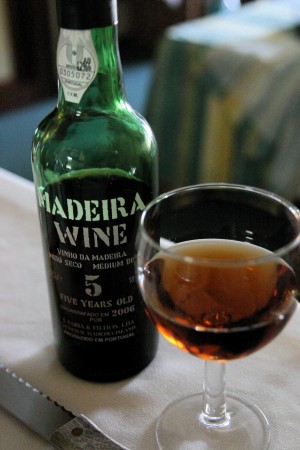I confess. I am a reformed wine snob. I used to shudder when people served white wines with steak or red wines with seafood. I would look down my nose at sommeliers (wine waiters) who knew less about the 1961 vintages than I did or couldn’t identify the minor varietals in Chianti or tell a VDQS from a DOCG.
Now I cheerfully plunk ice cubes in “plonk” (inexpensive day to day drinking wine of reasonable quality) and sometimes pour a splash of white wine to sip with my roast beef just because I feel like it.
 Having said that, there are certain great wines which DO demand respect…and I have had the good fortune to try some of them. This came from having close friends who had the foresight to lay down cases of rare wine in the 1960’s when they were still affordable or the good luck to stumble on fabulous wines unappreciated by others.
Having said that, there are certain great wines which DO demand respect…and I have had the good fortune to try some of them. This came from having close friends who had the foresight to lay down cases of rare wine in the 1960’s when they were still affordable or the good luck to stumble on fabulous wines unappreciated by others.
For instance, when I graduated from medical school, Dixie, a dear orthopedic colleague gifted me a bottle of 1961 Chateau Gruaud-Larose. Now 1961 was the vintage of the twentieth century and while Gruaud-Larose may have only made second tier in the famed 1885 classification of Bordeaux wines, it was an absolutely amazing beverage. I consumed it in 1986 when it was a quarter century old. A lot of wines would have been way over the hill by then especially these days when wines are vinified to be drunk young, but the Gruaud-Larose was at its prime…and went down fabulously with a piece of medium-rare prime rib.
If long-lived wines fascinate you, well, look no further than the Madeiras. These wines are produced on the Portuguese island of Madeira, which features wines fortified with brandy that run about 20% alcohol. Many are deceptively sweet and go down easily, which is why Oxford and Cambridge students used to like to ply their lady friends with said beverage. I believe an old Edwardian song goes something like:
“Have some Madeira m’dear…you really have nothing to fear.”
The fortification process and high sugar content allow Madeiras to last for centuries. My orthopod friend, Dixie, served me a glass from the 1862 vintage (no that’s not a typo).  It was absolutely delicious for something bottled when Robert E. Lee was still fighting Yankees. What makes it unique is that it was produced before 1870 when virtually every European grape vine was wiped out by Phylloxera, a louse imported from North America that eats the vine’s roots. Now almost all European wine grapes are grafted onto American root stock and pre-Phylloxera wines, which we could argue were the only TRUE European wines, are almost unheard of.
It was absolutely delicious for something bottled when Robert E. Lee was still fighting Yankees. What makes it unique is that it was produced before 1870 when virtually every European grape vine was wiped out by Phylloxera, a louse imported from North America that eats the vine’s roots. Now almost all European wine grapes are grafted onto American root stock and pre-Phylloxera wines, which we could argue were the only TRUE European wines, are almost unheard of.
Another opportunity to try great wines came when my sister’s boyfriend, Wally, ran into a bunch of his friends busily emptying out old bottles of wine that their recently deceased uncle stored in his cellar. They apparently felt that white wines bottled in the 1930’s would be too old to be drinkable.
Normally they would have been right, but Sauternes wines, especially Chateau d’Yquem, are made from rotten grapes and have amazingly long lives. Typically, rotten grapes wouldn’t make particularly good wine but when Botrytis cinerea hits, it concentrates and flavors the juice. As improbable as it may seem, this “noble rot” produces magical dessert wines with ample sugar, which preserves the wine for decades. Chateau d’Yquem is the most prominent producer of these wines and what Wally’s friends were pouring down the drain was the 1934 vintage. He managed to save two of twelve bottles, meaning his friends had thrown away enough wine to put a large down payment on a nice home. We enjoyed these after dinner one evening and they were ethereal.
Another great wine I once tried was a 1971 Chateau Petrus, a half bottle given to me as a birthday gift. One of the world’s most expensive wines, I probably could have sold it to pay off my student loans…but I didn’t. It was also amazing.
I count myself fortunate to have tried some of the world’s great wines. It’s a shame that most of them seem to be getting priced beyond the average person’s reach. If you get a chance to sample one, count yourself lucky…and save the ice cubes for the “plonk”.
Photo Credits
Chateau Gruaud Larose – Vintage Wine and Port
Madeira Wine – Wikipedia Creative Commons
Vineyards of Château d’Yquem in Sauternes. – Wikipedia Creative Commons
Thumbnail Image – Wikimedia Public Domain




Please Share Your Thoughts - Leave A Comment!